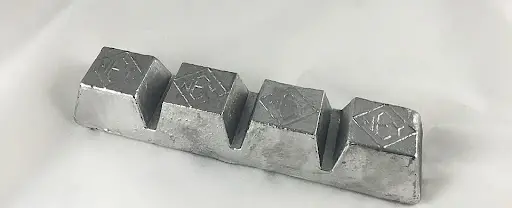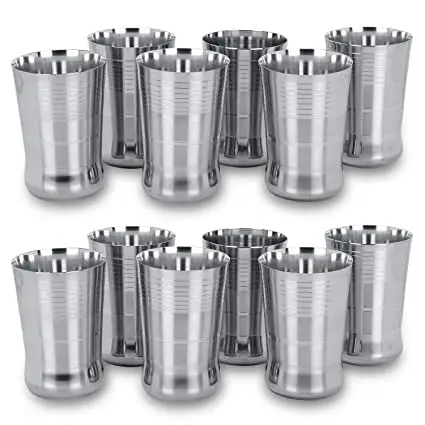What is the meaning of Alloy?
Alloy refers to a substance composed of two or more metals. Additionally, combinations of metals and other elements can produce alloys. Frequently, the properties of alloys differ significantly from those of their constituent elements. It is typical for alloys to possess greater strength and hardness than pure metals. Red gold is an example of an alloy, as it is created by combining copper and gold. White gold, which is produced by alloying silver and gold, is another important gold alloy.
You can Read More Chemistry Articles.
Alloys can either be solid solutions of metallic elements in which all grains/crystals are of the same composition, or they can be mixtures of metallic phases containing at least two different solutions, resulting in microstructures containing different types of crystals. Intermetallic compounds have crystal structures and stoichiometry that are well-defined. In certain instances, Zintl phases (the products of chemical reactions between alkali metals or alkaline earth metals and post-transition metals or metalloids) can also be categorized as alloys.
Alloys are recognized for their metallic bonding. The constituents of an alloy are measured in terms of their mass percentage for the vast majority of practical applications. In certain scientific studies, however, alloy components are measured in terms of their atomic fractions. On the basis of the atomic arrangements in their respective lattices, alloys can be divided into two categories: substitutional alloys and interstitial alloys. Additionally, alloys can be classified according to the total number of phases present. Homogeneous alloys, for instance, contain only one phase, whereas heterogeneous alloys contain two or more phases.
Examples of Alloys
Babbitt Metal
Babbitt metal, also known as bearing metal, is an alloy used as the bearing surface in plain bearings. This alloy was created by the American inventor Isaac Babbitt in 1839. The usual constituents of Babbitt metal are:
- Tin (Sn) – 90%
- Antimony (Sb) – 7%
- Copper (Cu) – 3%
This alloy’s low coefficient of friction with steel is one of its most desirable features.

Bell Metal
Bell metal is an alloy that is primarily used to manufacture bells and other similar instruments (hence the name “Bell” metal). It can be considered a form of bronze that contains a comparatively high proportion of tin. The usual constituents of bell metal are:
- Copper (Cu) – 78%
- Tin (Sn) – 22%
This material is also utilized in cooking and eating implements. It is also utilized in a number of household ornaments.

Steel
Steel is a very popular alloy due to its low price and high tensile strength. It is predominantly an iron-carbon alloy. However, it is known that different types of steel contain varying amounts of carbon and other elements (such as chromium, manganese, sulfur, phosphorus, nickel, copper, and molybdenum). Typically, at least 75% of steel’s weight is comprised of iron. Depending on the type of steel, it can also contain varying amounts of carbon and other elements. For instance, the constituents of stainless steel are:
- Approximately 85-88% iron (Fe)
- At least 10.5% chromium (Cr)
- Less than 1.2% carbon (C)
- Small quantities of other elements
Due to its affordability and high tensile strength, steel is used for the construction of buildings and infrastructure, automobile bodies (including trains and ships), and electrical appliances.

Bronze
Bronze is an alloy made of copper and tin. It is utilized in a variety of medals, coins, trophies, heavy gears and tools, and electrical hardware. The usual components of bronze are:
- Copper (Cu) – 75%
- Tin (Sn) – up to 12%
- Other elements such as manganese, aluminium, zinc, nickel, silicon, phosphorus, and arsenic
The bronze’s strength can vary depending on the elements used in the alloying process. In terms of hardness, bronze is significantly superior to pure copper. Additionally, it is more ductile and machineable than pure copper.

Nichrome
According to its name, nichrome is an alloy composed primarily of nickel and chromium. It is common for nichrome alloys to include iron and other elements. The usual constituents of nichrome alloys are:
- Nickel (Ni) 80-85%
- Chromium (Cr) 15-20%
- Iron and other elements
Primarily, nichrome is utilized in resistance wires. It is also employed as the heating element in a variety of electrical appliances, including space heaters and bread toasters. It is also worth noting that nichrome alloys are used in certain types of dental fillings.
Frequently Asked Questions on Alloy Meaning – FAQs
Q.1 What does the term “alloy” mean?
Alloys are metal or metal and other element combinations. In order to impart certain properties to metals or to strengthen some of their existing properties, metals can be alloyed with other metals/elements in specific proportions. Pure aluminium, for instance, is a relatively soft metal. Pure copper is also very pliable. However, when aluminium is alloyed with copper, the resulting alloy is significantly stronger than its parent metals.
Q.2 List some examples of alloys.
These are some commercially significant alloys:
Steel
Nichrome
Bronze
Brass
Duralumin
Solder
Q.3 Which elements are commonly used for alloying?
Below are five common alloying elements.
Chromium
Vanadium
Molybdenum
Nickel
Manganese
Q.4 Do alloys occur naturally?
Some silver and gold alloys occur naturally. Meteorites are naturally occurring iron-nickel alloys.
Q.5 What is the difference between gold karats?
Karatage is used to quantify the gold’s purity (Karat). 24 Karat gold contains 99.9 percent pure gold, while 22K gold contains only 91.67 percent gold and 8.33 percent other metals such as silver, zinc, nickel, or others. 18K gold is composed of 75% pure gold and 25% other metals, such as copper or silver. 14 K gold is composed of 58.3% pure gold and 41.7% other metals. In 10 K gold, 41.7% is gold and the remainder is comprised of other metals.
Visit Utopper.com to learn more about the definition and meaning of alloys as well as other concepts related to the properties of metals and nonmetals.

